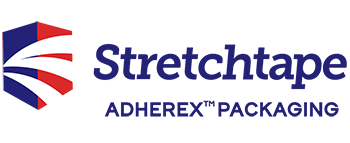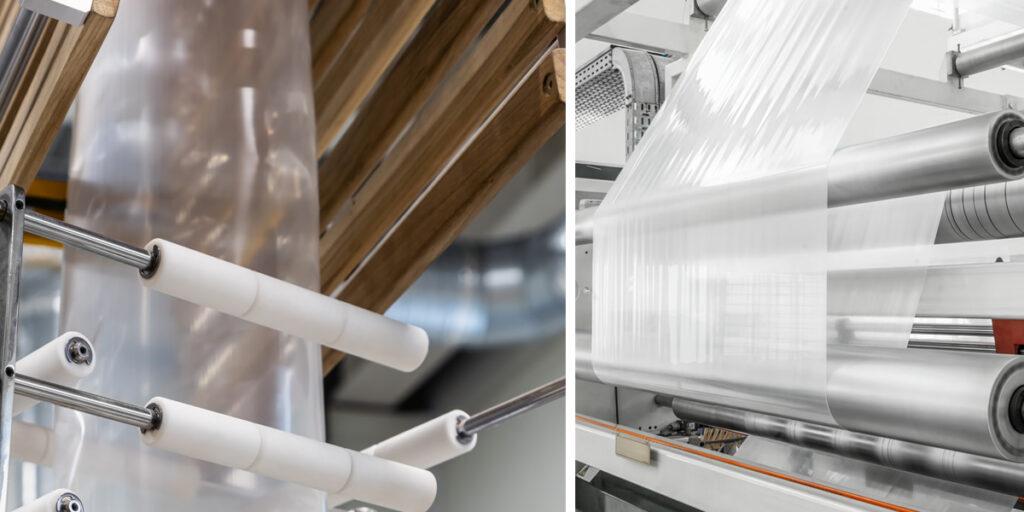Stretch wrap is a plastic film that is used to keep products tightly bound during transportation. Warehouse operators use the film to wrap their products onto pallets, reducing damage to goods, discouraging tampering, and reducing injuries.
There are two primary types of stretch films: Cast stretch film and blown stretch film. They differ in both their manufacturing process as well as their applications, with warehouse operators needing a thorough understanding of the perks and drawbacks of both.
What is cast stretch film?
As the name suggests, cast stretch film is created through a cast extrusion process. This involves a molten polymer being extruded through a slot die, which determines the film’s eventual thickness and width. From there the film is fed onto a cool roll to solidify it, before being made into large rolls.
The resultant film has a few advantages, including:
- Clarity: The process creates a transparent film that is ideal for maintaining visibility of products.
- Consistency: Due to the slot die extrusion method, cast film has a highly uniform thickness throughout. Additionally, there are no limits on how thick the roll can be.
- Reduced noise: Cast stretch film unwinds extremely quietly and is suitable to environments where noise is a factor.
- Strong cling: The film adheres well to itself and the products being wrapped, preventing load shifting and damage during transport.
- Cost-effective: Cast film’s manufacturing process is generally less expensive than other types of film.
- Low waste: By being thinner and more uniform than other types of film, cast film generates less waste.
What is blown stretch film?
The blown film extrusion process creates stretch film by blowing heated resin vertically into a bubble, which is then left to cool by air instead of by a roller. As a result, blown stretch film has a far more hazy and dull appearance when compared to the clarity of cast stretch film. It does however have its own advantages, including:
- Strength: Blown stretch wrap is highly durable and very hard to tear, even with sharp objects.
- Elasticity: Its high load and stretch capacity makes it useful for securing loads with sharper edges.
- Load stability: The film has a high level of cling which, when combined with its durability, maintains pallet stability.
- Additional resistances: Due to blown wrap’s high opacity, it’s more resistant to UV light and temperature changes, as well as moisture or other environmental factors.
- Customization: Additives can be added to blown wrap during the manufacturing process that enhance its properties, such as anti-fog or slip resistance.
Are there any drawbacks?
The two manufacturing processes produce films that have different strengths, but also weaknesses.
Cast stretch film does not have the same high holding power that blown stretch film provides, making it better suited to lighter loads. It also tears more easily than the highly durable blown film and doesn’t handle sharp edges as well. However, cast film is cheaper to manufacture than blown wrap, due to the more resource intensive manufacturing process, and it’s well suited to irregularly shaped objects.
While more expensive to produce, blown wrap instead is far more suited to heavy loads with sharp edges. It’s louder when unwound from rolls, and it has lower clarity caused by crystallization during manufacturing that makes it less favorable if product visibility is a factor. It also grabs onto itself during wrapping, which makes it less suitable to high-speed environments than cast wrap, which merely clings.
Choose Stretchtape for your cast or blown film needs
Ultimately, both types of film will be suitable to the majority of applications required. Choosing between the two types of film will depend on specific factors such as load weight, product shape, and durability. Warehouse operators should test their film performance and consider their application requirements when looking at which type of film to invest in.
At Stretchtape we offer blown and cast banding stretch film from 28 gauge to 500 gauge. Our machine-grade stretch film is manufactured using the cast extrusion process, as well.
Our film is used in various industries such as automotive, sports medicine, healthcare, construction, and apparel industries. Customers also benefit from highly customizable options, ensuring the film meets their needs.
Learn more about our stretch film products here, or speak to an expert at 216-486-9400.

